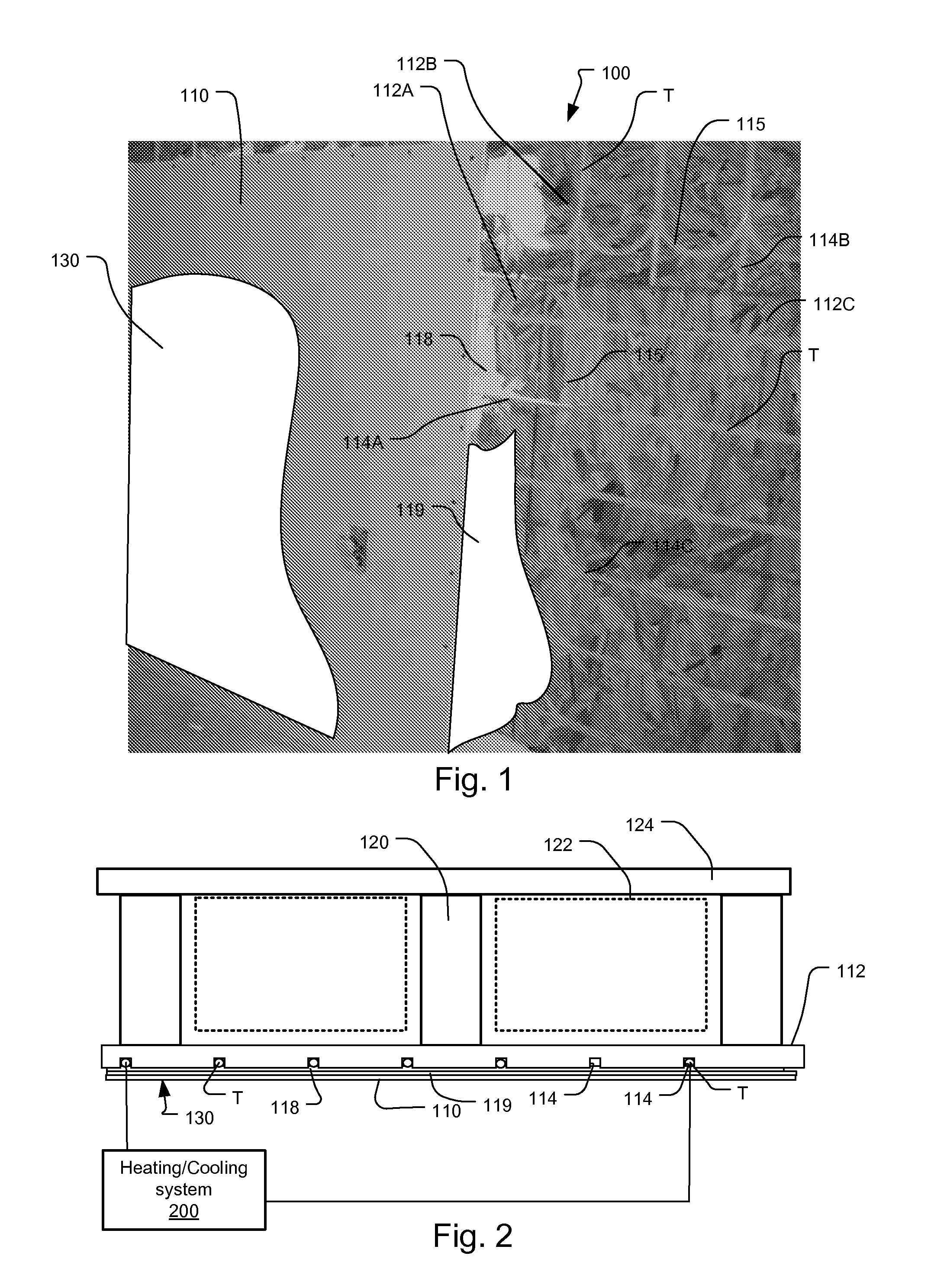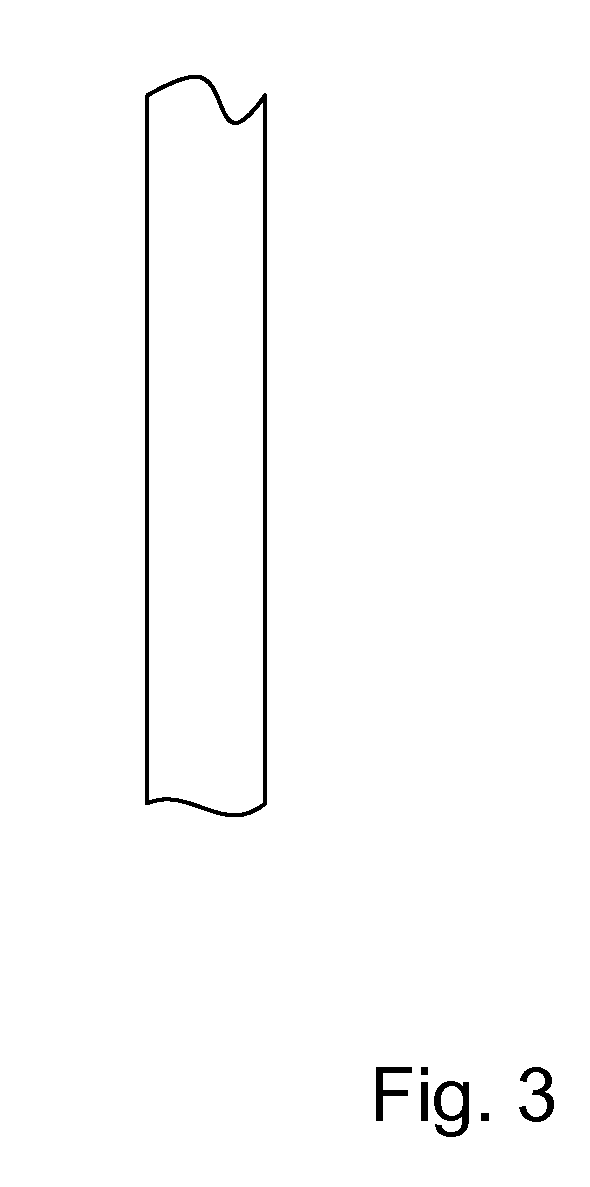In-Wall Hydronic Thermal Control System and Installation Method
a hydronic thermal control system and hydronic thermal control technology, applied in the direction of laminated elements, lighting and heating apparatus, heating types, etc., can solve the problems of limited success in incorporating hydronic thermal control systems in vertically-extending walls of buildings, mechanical instability of wallboards, and subject to breakage, etc., to achieve stable incorporation of tubing and good thermal conductivity
- Summary
- Abstract
- Description
- Claims
- Application Information
AI Technical Summary
Benefits of technology
Problems solved by technology
Method used
Image
Examples
Embodiment Construction
[0022]FIG. 1 shows a wall including a hydronic thermal management system, which has been constructed according to the principles of the present invention.
[0023]The wall 100 is constructed from tubing panels 112, i.e., 112A, 112B, 112C. In the preferred embodiment, these tubing panels 112 are constructed from a wood material. In one example, the panels are plywood panels. In one implementation, the tubing panels 112 are fabricated from oriented strand board (OSD) plywood, which is produced by binding wood chips with a mix of glue and resin. In another example, the panels 112 are constructed from CDX plywood. This type of plywood is produced by gluing together sheets of veneer, each layer being glued in the opposite grain to the one below it. In still other examples, other engineered wood or plant material products are used for the tubing panels 112. These include fiberboard, such as particle board, and hard board.
[0024]In the current implementation, the thickness of the tubing panels...
PUM
 Login to View More
Login to View More Abstract
Description
Claims
Application Information
 Login to View More
Login to View More - R&D
- Intellectual Property
- Life Sciences
- Materials
- Tech Scout
- Unparalleled Data Quality
- Higher Quality Content
- 60% Fewer Hallucinations
Browse by: Latest US Patents, China's latest patents, Technical Efficacy Thesaurus, Application Domain, Technology Topic, Popular Technical Reports.
© 2025 PatSnap. All rights reserved.Legal|Privacy policy|Modern Slavery Act Transparency Statement|Sitemap|About US| Contact US: help@patsnap.com



